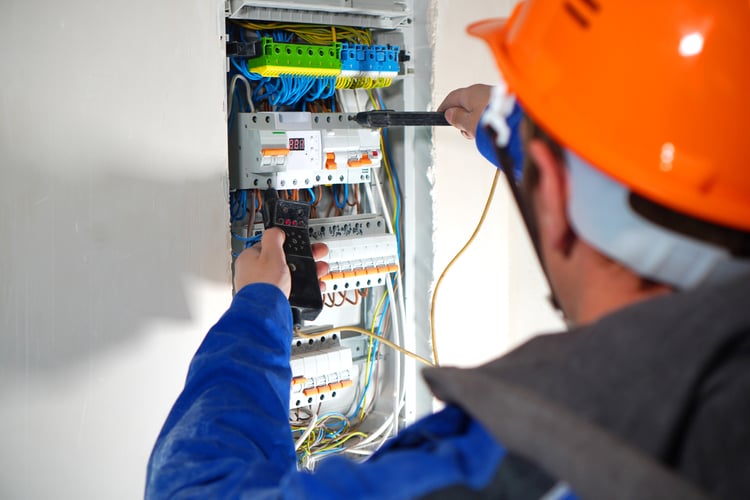Exploring the Globe of Electrical Installation: Usual Mistakes to Stay Clear Of for a Smooth DIY Task
From ensuring security procedures are fulfilled to abiding with electrical codes, the trip into the world of electrical work needs focus to information and accuracy. By being conscious of these risks and just how to prevent them, you can navigate the elaborate landscape of electrical installment with confidence and ensure a smooth job execution.
Inadequate Safety Precautions
In electrical installation projects, neglecting appropriate safety and security precautions can cause hazardous situations that threaten both people and residential property. One usual blunder is falling short to close off the power supply prior to starting any job. This oversight can cause electrical shocks and even fires. An additional critical error is neglecting to use personal safety tools (PPE) such as shielded gloves, safety and security goggles, and non-conductive shoes. These products are essential in safeguarding against prospective crashes. Furthermore, poor grounding or bonding can present severe dangers. Incorrectly based electric systems can bring about electrical surges and tools damages. Moreover, overlooking regional building codes and regulations can have extreme consequences. These standards are placed in location to make sure the safety of the installation and the owners of the building. By adhering to safety and security procedures, including proper training, making use of security equipment, and adhering to policies, individuals can minimize dangers and promote a secure electric setup setting.
Incorrect Wire Sizing

Wrong cable sizing can also affect the general effectiveness of the electric system. Undersized wires can cause voltage drops, leading to inadequate efficiency of electric tools and home appliances. Large cables, while not as harmful as undersized ones, can still cause unneeded expenditures and ineffective use sources.
To prevent these problems, it is important to comply with correct cord sizing standards based upon the electric load needs of the installment. Consulting with an expert electrical contractor or referencing the National Electrical Code (NEC) can aid guarantee that the cables are sized correctly for a risk-free and efficient electrical installment.
Overlooking Grounding Demands
One critical element frequently overlooked in electric setups is ensuring compliance with proper grounding demands. Grounding is an essential safety and security function that safeguards versus electrical shocks and stops tools damage.
Grounding serves as a pathway for electric currents to stream safely right into the earth, preventing the build-up of excess voltage that could hurt individuals or tools. Correct grounding entails connecting electric devices and steel rooms to the ground cable, basing pole, or grounding plate.

Overlooking Neighborhood Building Regulations
Disregarding adherence to local building regulations can posture considerable risks in electrical installations, potentially jeopardizing precaution and system integrity. Neighborhood building ordinance are established to make certain that electric work fulfills specific safety and security standards and guidelines set by the authorities. Ignoring these codes can result in major consequences, such as electrical fires, electric shocks, or damage to the property.
Local building ordinance commonly cover various facets of electrical installments, including circuitry techniques, outlet placements, circuit defense, and grounding requirements. Failing to comply with these codes may result in penalties, fell short examinations, or the need to renovate the entire electric work, resulting in unnecessary expenses and hold-ups.
To stay clear of the pitfalls of neglecting regional structure codes, it is essential for DIY lovers and even specialists to familiarize themselves with the suitable guidelines prior to starting any kind of electrical task. Consulting with local authorities or employing a certified electrical contractor for advice can help ensure that the electric installation meets all the required code demands, advertising a safe and reputable electric system in the lengthy run.

Poor Preparation and Organization
Have you thought about how thorough planning and company are essential elements in making sure the success and security of an electrical setup job? Poor preparation and organization can lead to a myriad of concerns, ranging from job delays to significant security risks. One usual blunder is underestimating the range of job associated with an electric installment, which can result in not enough products or insufficient prep work. Without BRE Services an in-depth strategy describing the steps, timeline, and needed sources, DIY fanatics may find themselves bewildered and vulnerable to errors.
Additionally, lack of organization can result in complication relating to the design of electric components, potentially causing defective connections or circuits. Failure to classify cables properly or track circuit representations can cause fixing problems down the line. Additionally, bad preparation in regards to budgeting and purchase can cause unneeded expenses or hold-ups in completing the project.
To prevent these mistakes, make the effort to develop a comprehensive plan, collect all required materials and devices beforehand, and make sure that you have a clear understanding of the task range prior to beginning - BRE Electrical. Appropriate organization and preparation are essential to an effective electrical installment job
Conclusion
Finally, it is vital to prioritize safety and security, appropriate preparation, and adherence to regional codes when undertaking electrical setup projects. Staying clear of usual blunders such as inadequate safety and security precautions, inaccurate cord sizing, neglecting grounding demands, and poor preparation can make certain a smooth DIY project. By following these standards, people can efficiently browse the globe of electrical installment with self-confidence and efficiency.